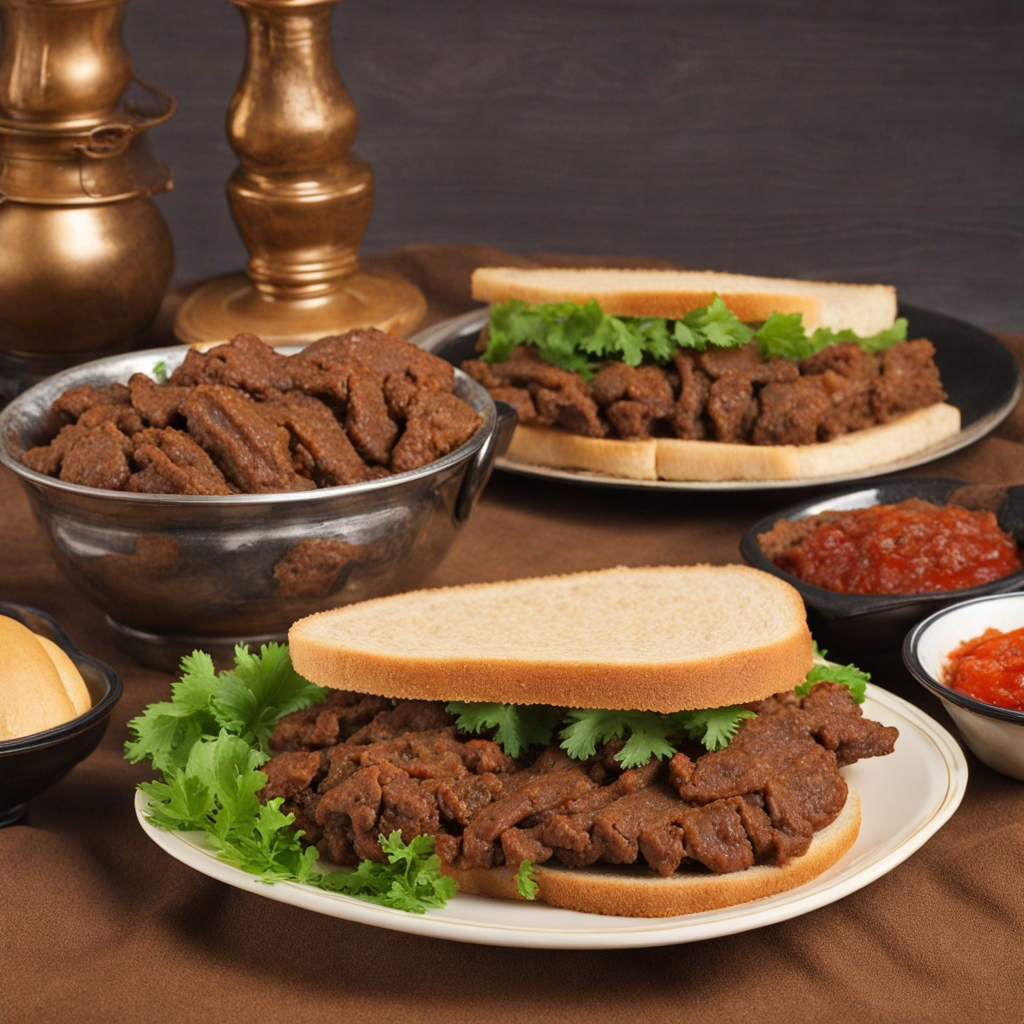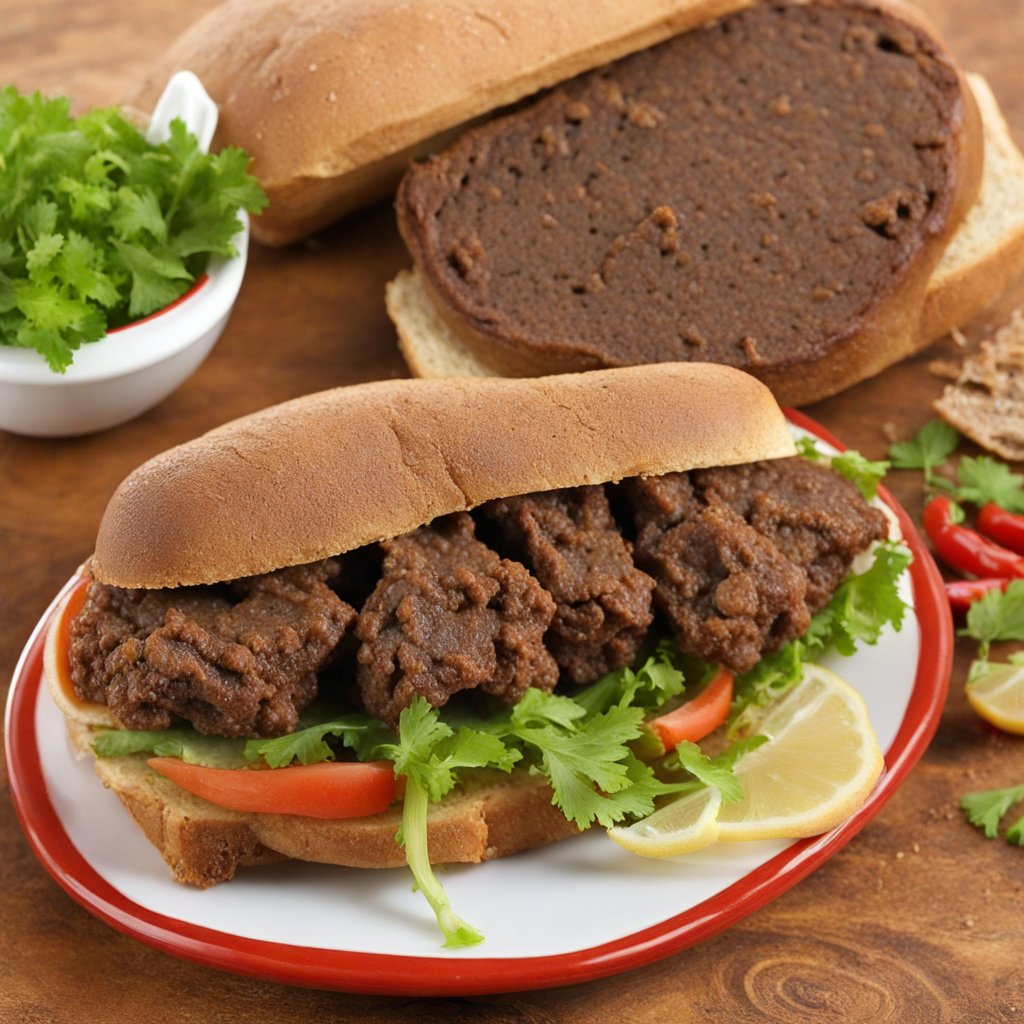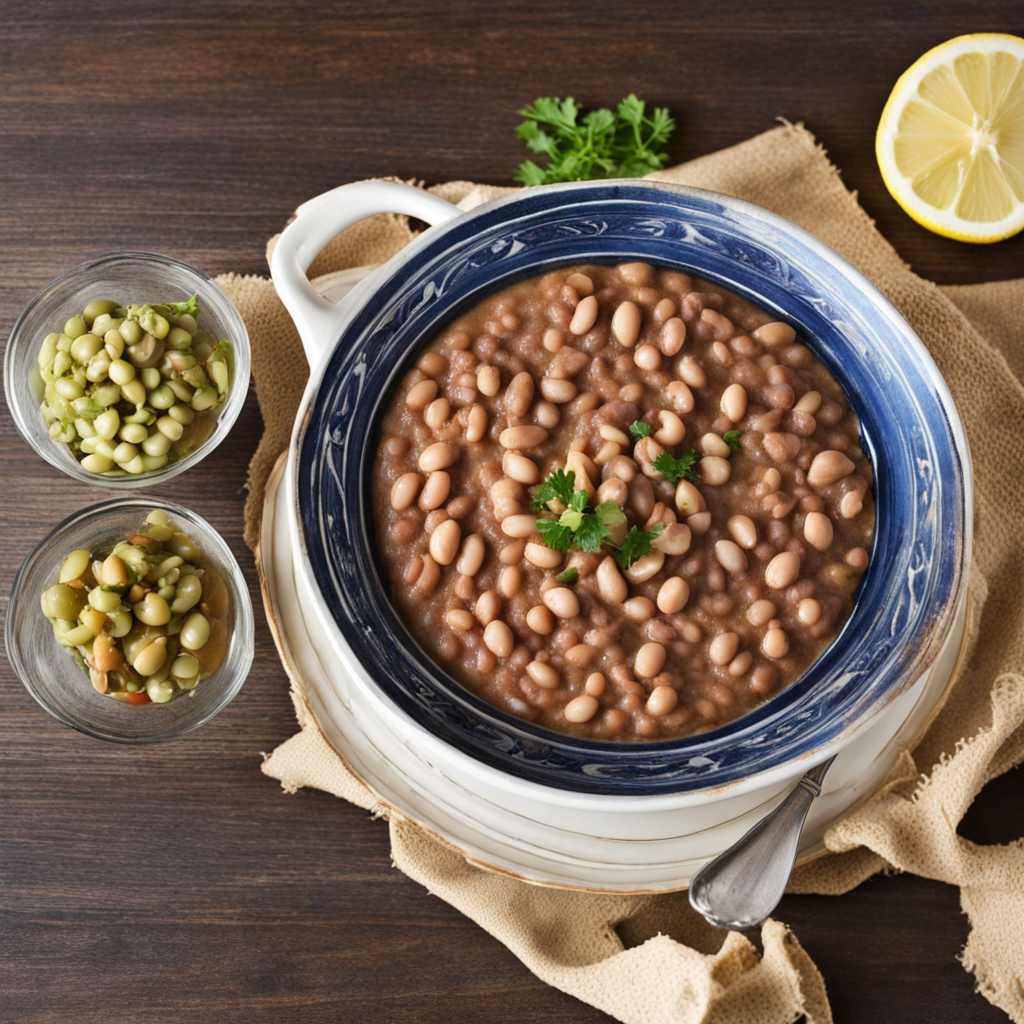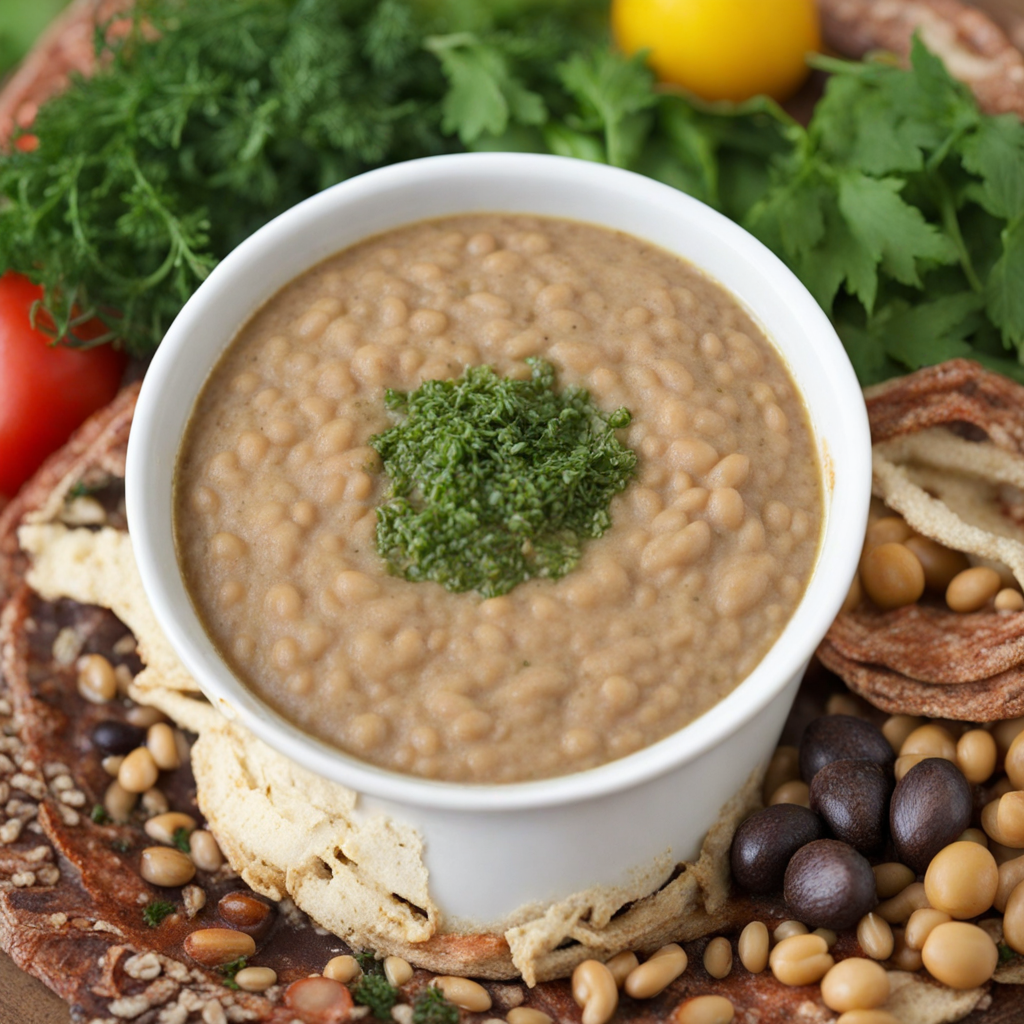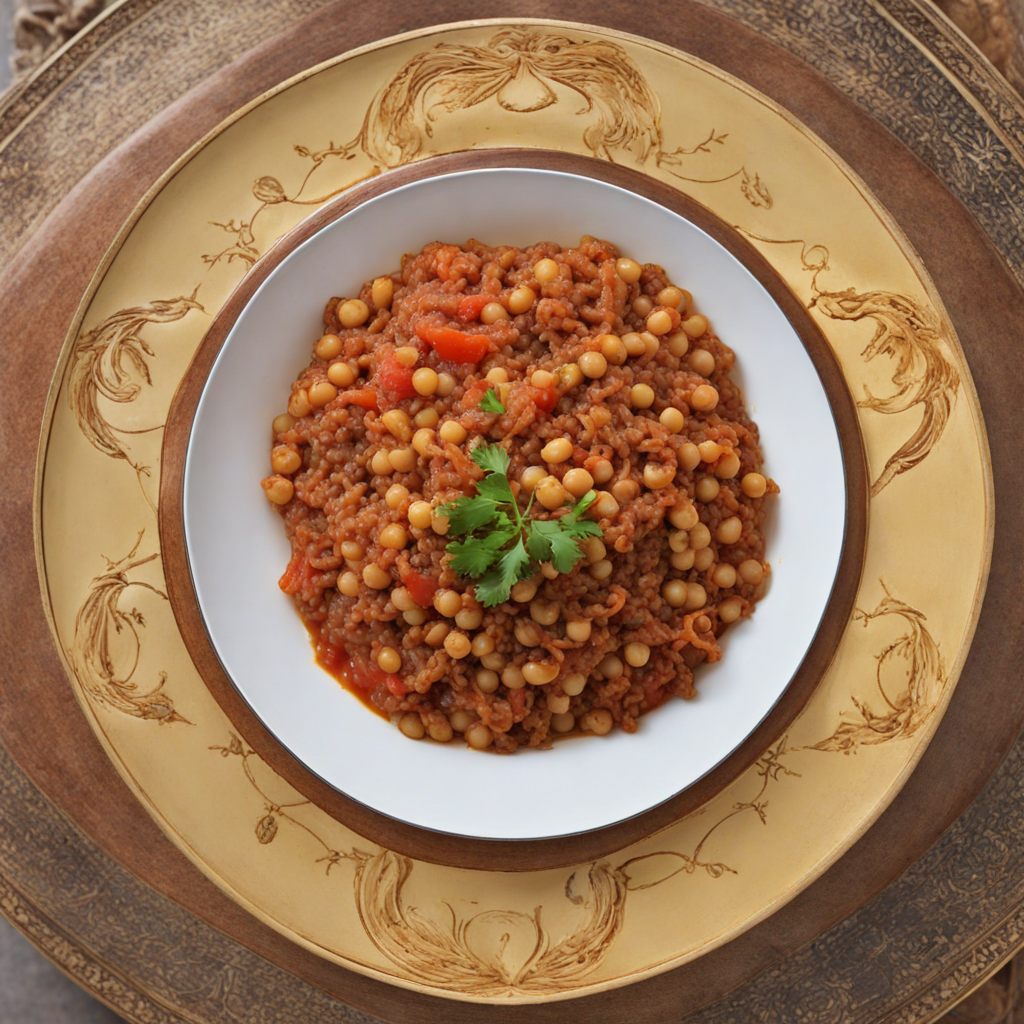Alexandrian Liver
Alexandrian Liver, or "Kebab Hindi," is a beloved street food from the vibrant city of Alexandria, Egypt. This dish primarily features sautéed liver, often from beef or lamb, which is seasoned with a blend of spices that may include cumin, coriander, and a hint of chili, lending it a warm and aromatic flavor profile. The liver is typically cut into small pieces, allowing it to absorb the spices fully, resulting in a rich and savory taste that is both hearty and satisfying. It is often cooked until just tender, ensuring that the texture remains juicy and succulent, which is key to the dish’s appeal. What sets Alexandrian Liver apart is its method of preparation and the way it is enjoyed. The liver is usually grilled or pan-fried, and it is often served with a side of fresh, tangy lemon wedges, which brighten the dish and enhance its flavors. Additionally, it may be garnished with chopped parsley or onions, adding a fresh contrast to the richness of the liver. Many locals enjoy it wrapped in warm bread or pita, making it a convenient and delicious option for a quick meal or snack on the go. The experience of tasting Alexandrian Liver is not just about the flavors; it’s also about the atmosphere in which it is enjoyed. Found at bustling street vendors or local eateries, this dish embodies the essence of Egyptian cuisine, where food brings people together. The combination of the aromatic spices, the tender liver, and the lively surroundings creates a sensory delight that invites you to indulge in the rich culinary heritage of Alexandria. Whether you are a seasoned lover of offal or a curious food adventurer, Alexandrian Liver promises a unique and unforgettable taste experience.
How It Became This Dish
The History of كبدة إسكندراني: A Culinary Gem of Egypt #### Origins كبدة إسكندراني, or Alexandrian liver, is a traditional Egyptian dish that has its roots deeply embedded in the coastal city of Alexandria. Known for its vibrant mix of cultures, Alexandria has historically been a melting pot of civilizations, including the Greeks, Romans, and Arabs, which significantly influenced its culinary landscape. The dish primarily features beef liver, which is seasoned with a unique blend of spices and is often served in a way that captures the essence of both street food and home-cooked meals. The origins of كبدة إسكندراني can be traced back to the late 19th and early 20th centuries, when the modern Egyptian state was being shaped. The dish likely evolved from the broader tradition of liver preparations found throughout the Middle East. However, what sets كبدة إسكندراني apart is its specific seasoning and cooking method, which reflects local tastes and the availability of ingredients. The dish typically includes spices such as cumin, coriander, garlic, and chili, creating a delightful and aromatic flavor profile. #### Cultural Significance In Egyptian culture, food is not merely sustenance; it is a medium of social interaction and a representation of heritage. كبدة إسكندراني exemplifies this cultural ethos. The dish is commonly associated with street food stalls, particularly in Alexandria, where vendors skillfully prepare it in large pans over open flames. This accessibility has made كبدة إسكندراني a beloved staple among locals and visitors alike. The cultural significance of كبدة إسكندراني extends beyond its flavors. It is often seen as a symbol of Alexandria's culinary identity, reflecting the city's rich history of trade and cultural exchange. The dish brings together various influences, showcasing the adaptability and creativity of Egyptian cuisine. For many, it evokes memories of family gatherings, street-side feasts, and the bustling life of Alexandria. Moreover, كبدة إسكندراني has established itself as a popular late-night snack, often enjoyed after a long day or during the vibrant nightlife of the city. It is typically served in a sandwich format, wrapped in fresh, fluffy bread, along with pickles and a drizzle of tahini or a spicy sauce. Such customs highlight the communal aspect of food in Egyptian culture, where sharing meals fosters connections among friends and family. #### Development Over Time As Alexandria evolved through the 20th century, so too did كبدة إسكندراني. The dish's popularity surged, especially during the mid-20th century, when urbanization and economic changes led to a burgeoning street food culture across Egypt. The rise of food stalls and mobile vendors made كبدة إسكندراني easily accessible, allowing it to gain a dedicated following among the working class and students. However, the dish has also undergone various adaptations over the years. While the traditional preparation remains popular, modern twists have emerged, appealing to younger generations and those seeking new culinary experiences. Some chefs have begun experimenting with fusion elements, incorporating international flavors or presentation styles into the classic recipe. Despite these variations, the essence of كبدة إسكندراني—its rich spices and tender liver—remains intact, preserving its original character. In recent years, كبدة إسكندراني has gained attention beyond Egypt's borders. Food bloggers, culinary enthusiasts, and social media have played a pivotal role in showcasing this dish, often highlighting its unique flavor combinations and street food charm. This global interest has encouraged some restaurateurs to include كبدة إسكندراني on their menus, introducing it to an international audience and further solidifying its status as a culinary gem. #### The Modern Experience Today, كبدة إسكندراني can be found in various settings, from bustling street carts to upscale restaurants. The dish has transcended its humble origins, becoming a symbol of Egyptian cuisine that is celebrated both at home and abroad. Traditional preparations often involve marinating the liver in a mix of spices and frying it until tender, then serving it hot in a sandwich or alongside rice and salad. The experience of enjoying كبدة إسكندراني is as much about the atmosphere as it is about the food itself. Street vendors often cook in front of customers, creating an interactive dining experience that highlights the skill involved. The sizzle of the liver, the aroma of spices, and the lively banter of vendors all contribute to a sensory experience that is quintessentially Alexandrian. Moreover, كبدة إسكندراني has become a culinary ambassador for Alexandria, promoting the city as a destination for food lovers. Food tours often include stops at famous كبدة إسكندراني stalls, allowing visitors to experience the dish in its authentic setting. This not only supports local vendors but also fosters appreciation for Egyptian culinary traditions. #### Conclusion In conclusion, كبدة إسكندراني is more than just a dish; it is a representation of Egyptian culture, history, and community. Its origins in Alexandria reflect a blend of influences that have shaped the city's identity over centuries. As the dish has evolved, it has maintained its core characteristics while adapting to contemporary tastes and trends. The cultural significance of كبدة إسكندراني continues to grow, making it a beloved staple that connects generations and transcends borders. Whether enjoyed at a bustling street cart or a sophisticated restaurant, كبدة إسكندراني remains an enduring symbol of Egypt's rich culinary heritage.
You may like
Discover local flavors from Egypt


